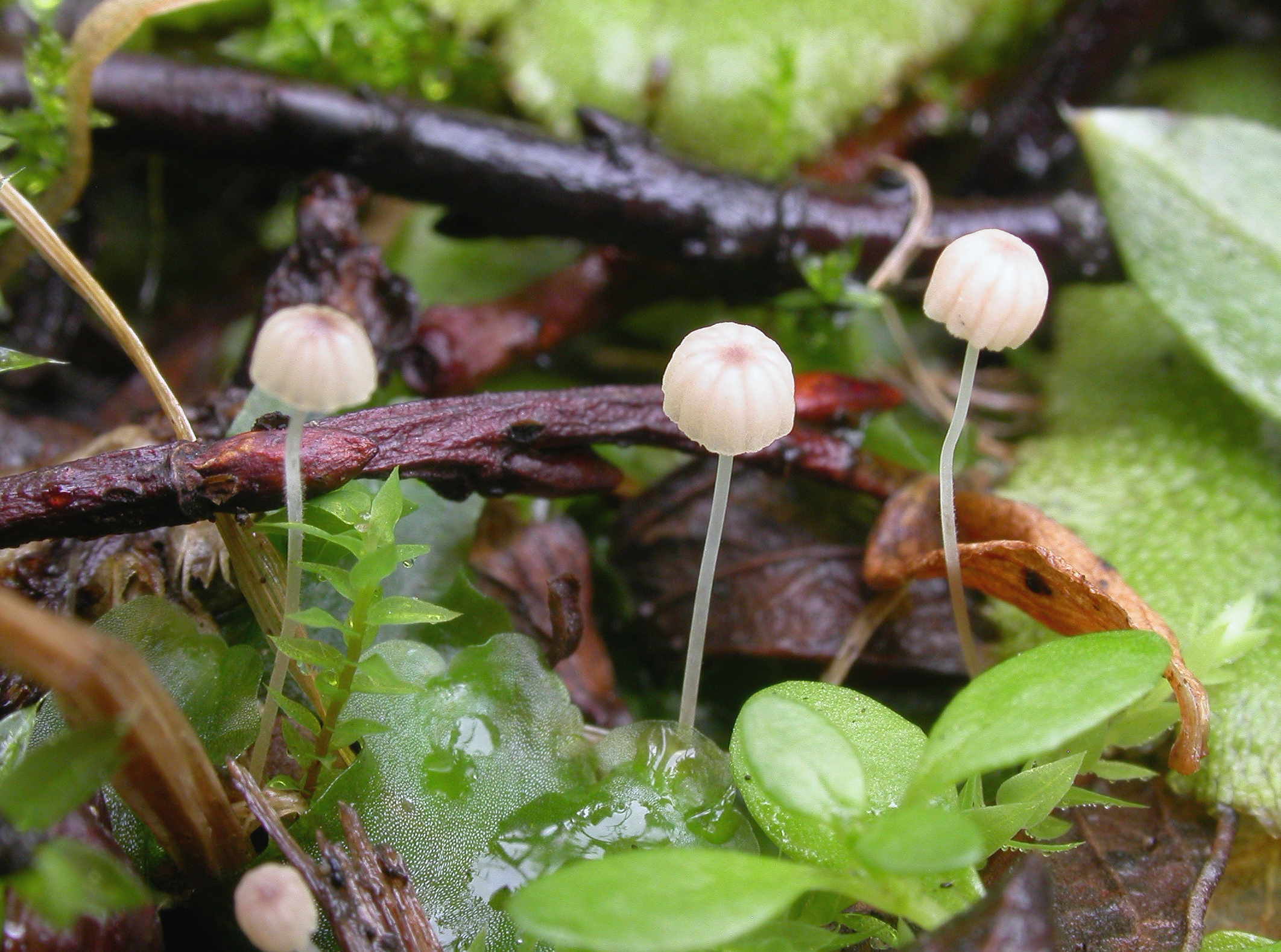Mycena smithiana
Mycena smithiana
Description
Cheilocystidia, hypha of the pileipellis, caulocystidia, and hyphae of the cortical layer of the stem.
Cap 1-5 mm across, hemispherical to parabolical, becoming plano-convex, umbonate to flattened, sulcate, translucent-striate, pruinose, glabrescent, pale pink, pinkish-apricot to brownish-pink, often darker at the centre, with age often turning whitish pink. Gills 5-13 reaching the stem, narrowly to broadly adnate, ±decurrent with a short tooth, pink to pinkish-white, white. Stem 5-15 (-40) x 0.1-0.4 mm, fragile, cylindrical, equal, pruinose, glabrescent except for the base, which is somewhat bulbous, fairly dark grey to grey-brown in younger stages, becoming watery grey or brownish pink to watery white, insitituous or sometimes attached with a whorl of very thin, radiating fibrils. Odour none. Basidia 19-25 x 6-9 µm, slenderly clavate, 2-spored, with sterigmata up to 8 µm long. Spores 10-12.5 x 3.8-5 µm, Q = 1.9-2.5, Qav ˜ 2.1, elongated pip-shaped to somewhat cylindrical, amyloid. Cheilocystidia 14-29 x 6-16 µm, forming a sterile band, clavate to obpyriform, covered with fairly numerous, evenly spaced, cylindrical excrescences 1-5 µm long. Pleurocystidia absent. Lamellar trama dextrinoid. Hyphae of the pileipellis 3.5-12 µm wide, densely covered with warts, terminal cells up to 52 x 14 µm. Hyphae of the cortical layer of the stem2-3 µm wide, with excrescences 1-5.5 x 0.5-1.5 µm. Caulocystidia clavate to subglobose, diverticulate. Clamps absent.
Ecology and distribution
Typically on fallen, decaying leaves of Quercus. Autumn. Recorded north to Troms but uncommon in Norway.


